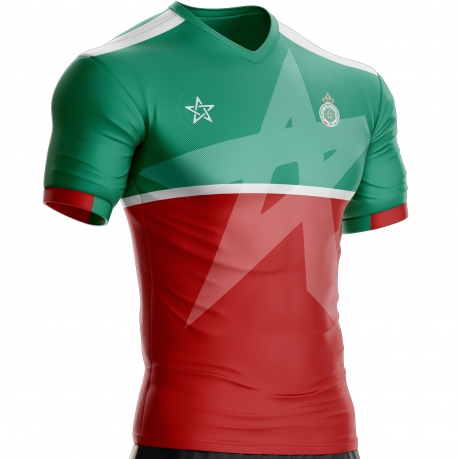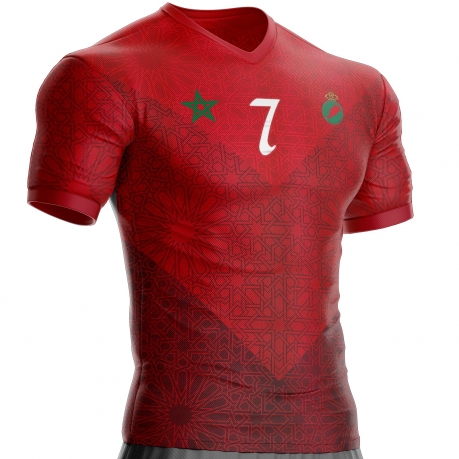The best Moroccan football stadiums

Morocco, land of football and flamboyant stadiums
Football, a true national passion, vibrates in the heart of Morocco. This fervor translates into a growing enthusiasm for sport and a crucial need for quality infrastructure. In response to this demand, the country has undertaken significant investments in the modernization and construction of high-level stadiums.
These stadiums are not simple playing fields, but true temples of sport which contribute to the development of national football. They offer players an environment conducive to excellence and fans an immersive and unforgettable experience.
Among these architectural and sporting gems, some particularly stand out. Impressive capacity, modern facilities, electric atmosphere... Discover the "best stadiums" in Morocco, selected according to rigorous criteria.
This trip through Moroccan stadiums will allow you to understand the importance of these infrastructures for the development of national football. You will discover the diversity and increasing quality of these speakers, symbols of Morocco's sporting ambition.
The stars of the Moroccan sporting landscape
The Mohammed V Stadium in Casablanca: A historic monument and unparalleled fervor
Inaugurated in 1955, this legendary stadium is a true institution in Morocco. Its capacity of 67,000 seats makes it one of the largest stadiums in Africa. A true temple of national football, it vibrates to the rhythm of the exploits of the resident clubs, the Raja Club Athletic and the Wydad Athletic Club. The electric atmosphere that reigns during matches is unique and contributes to the legend of this stadium.
The Ibn Battouta Stadium in Tangier: An architectural gem facing the sea
Perched on the heights of Tangier, this modern stadium with a capacity of 65,000 seats offers a breathtaking view of the Mediterranean Sea. Its futuristic architecture and cutting-edge facilities make it a true gem. Inaugurated in 2011, it has already hosted major sporting events, such as the 2015 African Cup of Nations.
The Grand Stade de Marrakech: A showcase of modernity under a retractable roof
This brand new stadium, with a capacity of 45,000 seats, is distinguished by its retractable roof and hybrid pitch. Inaugurated in 2011, it is the first Moroccan stadium to have received “Green Star” certification for its environmental performance. The Grand Stade de Marrakech regularly hosts high-level matches and offers optimal comfort to spectators.
Other stadiums to discover
Morocco has other notable sports venues, such as the Stade d'Agadir (45,480 seats) and the Stade de Berkane (15,000 seats). These stadiums, although less imposing than the previous ones, nevertheless remain quality infrastructures which contribute to the development of national football.
Towards a promising future
Morocco continues to invest in its sports infrastructure. The ambitious project of the Grand Stade de Casablanca, with a capacity of 90,000 seats, if it sees the light of day, promises to propel the kingdom to another level. This ultra-modern stadium, which should be completed in 2025, aims to host major international competitions and place Morocco on the world football map.
The evolution of sports infrastructures, a mirror of Morocco's ambitions
The development of Moroccan stadiums is closely linked to the country's football ambitions. Morocco aims to become a major nation in African and world football. The construction and modernization of stadiums are key elements of this strategy.
By offering players optimal conditions and supporters a unique experience, Moroccan stadiums contribute to the development of national football and the realization of the country's sporting ambitions.
Moroccan stadiums, pillars of the development of national football
Stadiums are not just playing fields, but essential pillars of the development of Moroccan football. They are meeting places for athletes and supporters, spaces for sharing emotions and celebrating the passion for football.
Morocco has been able to invest in the construction and modernization of its sports infrastructure, thus creating a diversity of quality stadiums. From historic venues like the Stade Mohammed V to modern stadiums like the Grand Stade de Marrakech, the country offers players and supporters an environment conducive to excellence and the development of football.
The future of Moroccan stadiums is promising. The Grand Stade de Casablanca project symbolizes the country's ambition to rise to the rank of great football nations. The evolution of national sports infrastructures is closely linked to Morocco's aspirations to become an essential force on the continental and global scene.
However, challenges remain. The maintenance and management of existing stadiums constitutes a major challenge. In addition, the development of sports infrastructures must go hand in hand with the training of players and the support of supporters.
By meeting these challenges and continuing its policy of investment in sports infrastructure, Morocco can certainly position itself as a major player in international football. Moroccan stadiums, symbols of the country's ambition and dynamism, will play a crucial role in achieving this objective.









